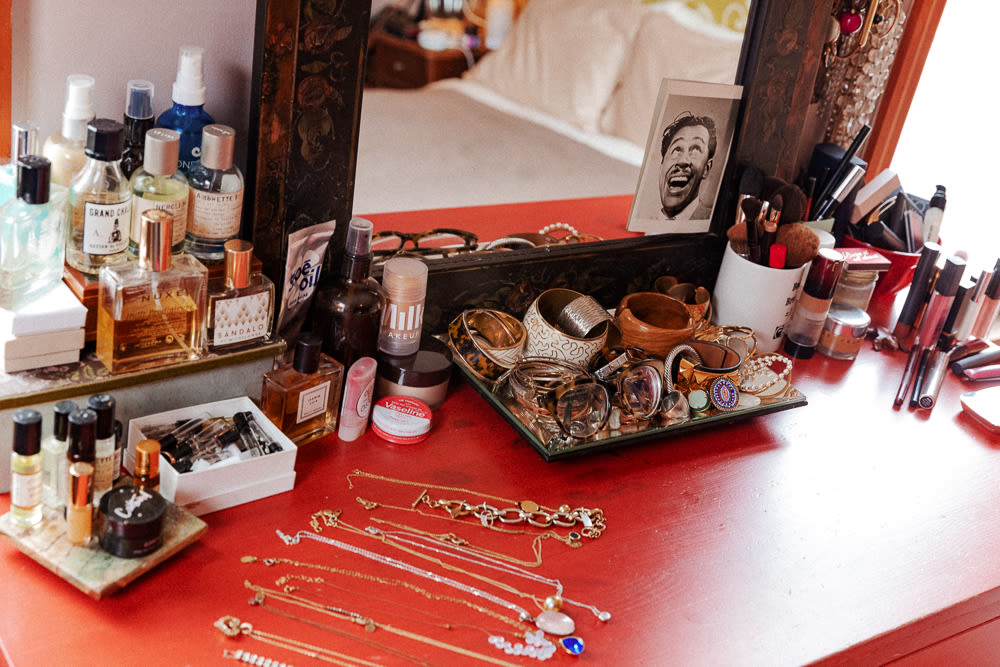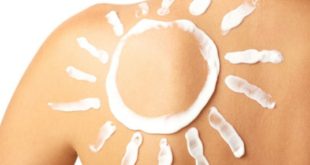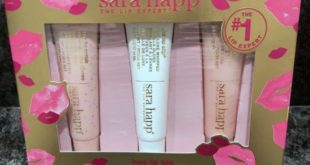
The necklace I wear every day is sort of a family heirloom. If you asked me about it, I’d probably tell you how the Aires charm was once my dad’s, flip it over, and let you read the “Love Grandma & Grandpa” inscription on the back. But there’s a second significance I don’t talk about as often because it’s more difficult to explain—it has to do with my mom, who miscarried lots of times. While I grew inside her, she wore the charm every day as part of a larger safety net to shield the pregnancy from harm: every time she walked into the garage she would touch the ceiling and say a prayer before getting into the car. She would also say a prayer every time she saw birds sitting on a wire. Every time she went to the doctor’s office, she would park in the same spot (if that spot was not available when she got there, she would leave). And then there was the charm, which she pinned to her underwear when it looked ungainly (her word) with whatever she was wearing. When I was born, alive and healthy with all my fingers and toes, my mom credited these rituals. But when she went through the same motions with her next pregnancy, she miscarried again.
It’s difficult for me to imagine my mom’s fear, and the grief she felt for those lost, so desperately wanted babies. However, the emotions of fear and grief are not strangers—over the past several months, they’ve burrowed deep inside all of us, squeezing in between memories of loved ones and hopes for the future.
Recently, as I fidget with my necklace, I’ve been thinking more about what you get when you mix rituals and a high-stress situation, baked together for a prolonged period of time. I picked up lots of rituals this past summer, probably because I was looking for a sense of control amidst COVID and everything else, but also because I didn’t have to look that hard for them. The beauty and wellness industry tries to sell me a new ritual every day. According to my email inbox, every facet of my personal care routine was ripe for ritualization, and brands picked them all: my morning glass of tea, taking vitamins, brushing my teeth, brushing my hair, brushing my body, moisturizing, painting my nails, painting my face, putting on fragrance, stretching, breaking a sweat, washing off the day. By the end of the summer, good-for-me rituals I had started with positive intentions started to feel like a straitjacket. I had to do my skincare routine. I had to exercise every day. I had to cook myself a healthy meal every night (God forbid I ever ordered takeout—this would send my anxiety through the roof). Eventually there were other, non-beauty related rituals too: reorganizing the fridge every day, reading exactly 50 pages of a book before bed. It felt like I held my world together so tenuously, and if I stopped doing these things, it (I?) would unravel.
I picked up lots of rituals this past summer, because I didn’t have to look that hard for them.
To rebrand a routine as a ritual seems disruptive, luxurious. When I mentioned it to Ashley, she was quick to point out that to call something a ritual is a brand storytelling device—the more time and interest a user devotes to a product, the stronger emotional connection they’ll have to the brand. A routine is habit; a ritual is choice. However, explains psychologist and neuropsych expert Dr. Sanam Hafeez over the phone, in the world of psychology the words routine and ritual are not as interchangeable—the key difference between them is reliance.
“Our brain likes routines because they put our bodies on auto pilot,” says Dr. Hafeez. “We get up in the morning and kind of stumble into the bathroom, we go downstairs, we put on a pot of coffee. And while we’re doing those things, the brain can plan. We need routines. Imagine waking up every morning and not having any idea what to do.” She also points out that these routines are not set in stone. Maybe one day you’re out of coffee. “If you can’t do your normal routine it may bum you out, but you’re OK,” she adds. “There’s flexibility and adaptability.”
Rituals lack that flexibility—they’re defined by psychologists and anthropologists as a rigid set of actions meant to be repeated in exactly the same way, and are used cross-culturally as a means to feel control. For the record, our brain likes rituals, too. “When we do something and it has an observable effect on us, we are more likely to repeat that behavior,” says Dr. Hafeez simply. She directs me to a study where participants were either prescribed a ritual or not, and then asked to take a test. It was inspired by athletes, who often have specific pre-game rituals meant to help improve their performance. (Tennis superstar Rafael Nadal is famous for this. One of his most well-known rituals has to do with his sideline beverages. Speaking about it, Nadal has said, “I put the two bottles down at my feet, in front of my chair to my left, one neatly behind the other, diagonally aimed at the court. It’s a way of placing myself in a match, ordering my surroundings to match the order I seek in my head.”) While the rituals did not improve the subjects’ performance, it did affect how they reacted when they did poorly—because the ritual made them feel confident and in-control, subjects were able to mitigate feelings of failure better. “The problem,” says Dr. Hafeez, “is what happens when, say, Nadal has to play when he doesn’t have the two drinks.”
“We need routines. Imagine waking up every morning and not having any idea what to do”
I start to tell Dr. Hafeez all the things I had been thinking about in the past few months, from my own rituals to my mom’s—speaking to a psychologist for work things, things tend to spill out. “People develop rituals sometimes out of habit, and they can become a sort of addiction, so to speak. But when rituals become confining, they stop being beneficial.” Dr. Hafeez also clarifies that you don’t actually have to have OCD to experience the kind of obsessions and compulsions characteristic of the clinical diagnosis. A lot of high-functioning and otherwise “normal” people exhibit similar behaviors. “You can experience periods of OCD, or something we call OCPD, which is obsessive compulsive personality disorder,” she notes, and points to both intense stress and genetic factors as potential triggers. To explain what OCPD is, Dr. Hafeez gives me two examples. One person is idiosyncratic—say, they eat their pizza crust first, or like the TV volume to be in a multiple of three. But the one with OCPD has the same irrational idiosyncrasies, coupled with a sense that the behavior has a consequence attached to it—if they don’t do the ritual, something bad will happen.
One of the first mainstream beauty companies to use the language of rituals for brand marketing purposes was Rituals. Based in Amsterdam and founded by Unilever alum Raymond Cloosterman, the mall mainstay makes affordable beauty products feel storied by plucking context from the religious rituals of non-Western cultures. The Ritual of Karma takes its name from the Hindu system of reincarnation. The Ritual of Cleopatra draws from how Egyptian men and women would wear crushed pigments to harness the power of the gods. The Ritual of Sakura is rooted in the Japanese Sakura Festival, which originated as a religious ceremony to honor the rice paddy god. And in the context of religion, rituals make sense—if you don’t accept and honor God, surely you will suffer. The consequence is kind of the whole idea.
Obviously religious ritual is an old concept, so old in fact that it predates written language. What Rituals did that was innovative was circumscribing things that aren’t sacred (applying moisturizer, styling one’s hair) within the bounds of ritual behavior. Now, lots of brands do this—I’ve gotten 372 emails pitching various beauty “rituals” in the past year. If you’re a normal person under normal circumstances, maybe you don’t take that too seriously. But if you’re looking to a ritual for control in a moment of stress, you may end up giving inanimate objects (like beauty products) more power than they have. “There’s no rationale to this,” emphasizes Dr. Hafeez. A beauty product may clear up a breakout or smooth rough skin. It might also make you feel cared for, and confident. But it won’t do anything to mitigate anxiety that the world is on fire, or stop it from burning. It can’t. Those things are not related.
What to do if you find yourself locked into beauty rituals? “If you feel that your ritual is getting out of control, the first step is recognizing the logical reasons why some things went wrong,” advises Dr. Hafeez. For me, that meant admitting that not caring for myself would not cause others to hurt—the pandemic, poverty, xenophobia are the problem. The next step is doing the exact opposite of the ritual your brain wants you to complete. “The only way to overcome this stuff is through cognitive behavioral therapy,” says Dr. Hafeez. “You push yourself to say, ‘I cannot let this thing control me,’ and you change your behavior.” Once you give up the rituals, you’ll likely notice that you feel… OK. Maybe even a little bit better, because you have the freedom to plan your day based on what you actually need.
“If you feel that your ritual is getting out of control, the first step is recognizing the logical reasons why some things went wrong.”
I don’t think that brands marketing products as rituals will stop any time soon, and I also don’t think brands who position their product as a ritual should be canceled. The thing is, everyone is vulnerable right now and looking for sense and control. I’m not sure who needs to hear this, but rituals won’t replace hugs, taking political action, and getting actual help when you’re feeling chaotic. Even if you do find benefit in rituals, not everything has to be one—maybe you just brush your teeth, slap some water on your face, and start your day. No one knows what the future holds! But, so I’ve been told, that’s the beauty of it all.
—Ali Oshinsky
Photo via ITG



